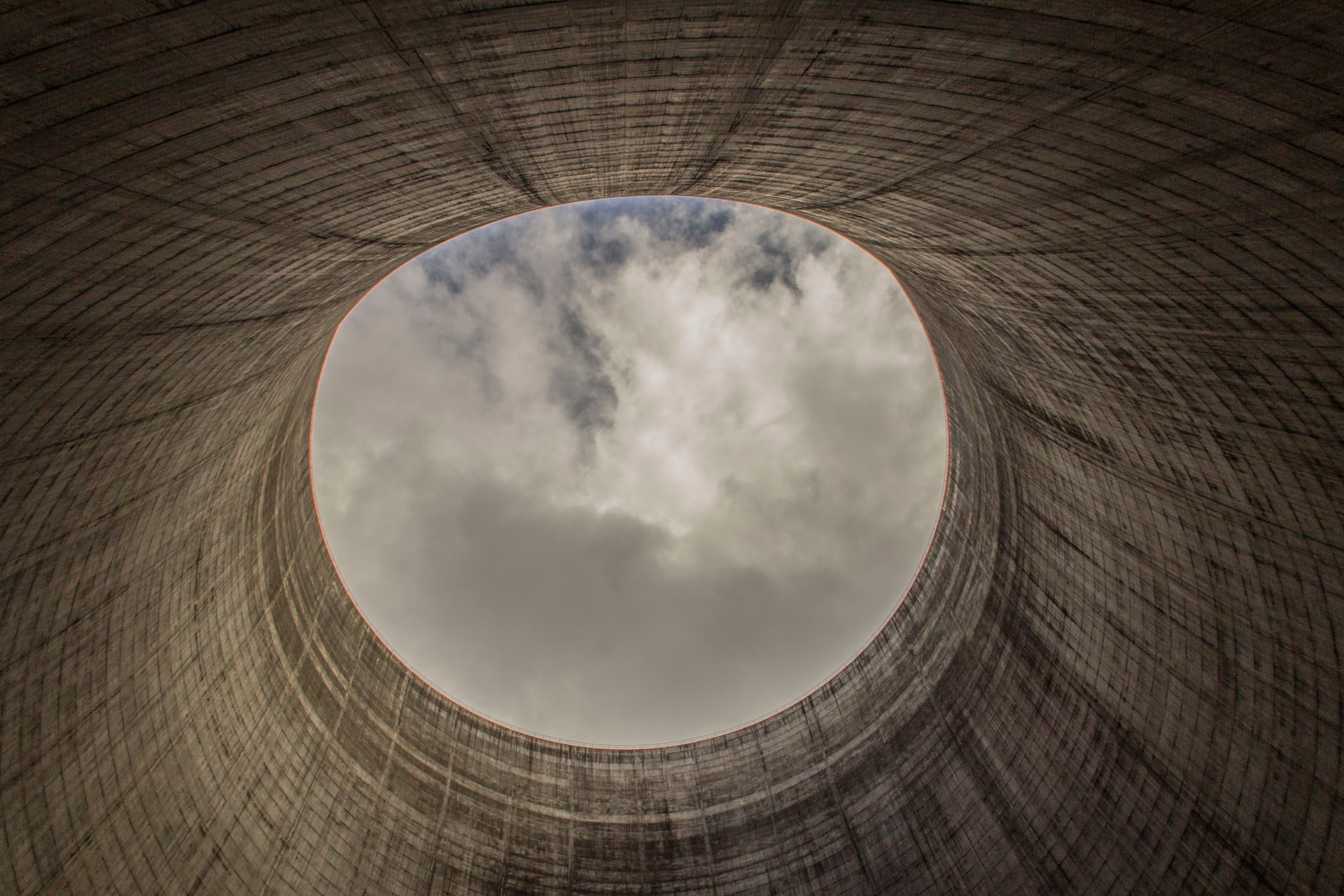We’re back on the topic of nuclear power. 2021 may mark the tenth anniversary of the Fukushima disaster, which on March 11th, 2011 rekindled the fear of the risks of atomic energy in the world, however, several countries today are reconsidering, thanks to new technologies, the nuclear power option as part of an energy plan to cut CO2 emissions.
Whether or not we want to continue along the atomic path, it’s imperative now that we deal with the radioactive legacies accumulated to date and which will only increase in the coming years. The decommissioning season of old nuclear power plants has in fact just begun: almost two hundred reactors in the world are currently in a state of shutdown and another hundred will end their life cycle by the end of the decade. It means millions of tons of materials to dispose of.
Luckily, circular economy can help. As Renewable Matter presented in an in-depth article, only 5% of this material is radioactive and dangerous: the remaining is recoverable for other uses.
Applying the principles of circularity to nuclear decommissioning contributes to reducing, at least in terms of volume, the extent of the nuclear waste problem. We discussed it with a team of experts from the IAEA, the UN International Atomic Energy Agency.
What does it mean to apply the circular economy principles to nuclear decommissioning?
Concepts and processes of circular economy aim to minimize waste and to make efficient use of available resources through, for example, design considerations, careful operation and by recovering and regenerating products at the end of a facility life cycle. With this strategy, the need for the exploitation of raw material is being reduced and long-time supply of valuable resources for future generations improves. In a perfect circular or closed cycle, all waste products would be reused.
If decommissioning incorporates CE approaches, it can reduce the need for disposal and can create long-term and more economical and ecological waste management solutions with added value for society. Therefore, CE strategies deliver a wide range of benefits, including reduced waste, lower costs and greater sustainability.
Which are the main obstacles?
When applying CE strategies to nuclear decommissioning, experts currently face two distinct situations. On the one hand, older facilities were designed and operated with little consideration of this issue, and their sustainable decommissioning poses specific challenges. On the other hand, new nuclear facilities are now being planned from the start with decommissioning, waste management and circular economy in mind, which presents the opportunity for using innovative solutions. For example, reactor building components can be constructed in a modular fashion for easier dismantlement or construction materials can be used which are easier to decontaminate.
One decisive factor for more sustainable dismantlement is the efficient coordination between decommissioning and radioactive waste management. Effective radioactive waste management contributes to the circular economy through waste minimization and segregation at the source, followed by suitable treatment. In all these activities, the effective use of the full waste management hierarchy, which sets out the priority order for avoiding contamination, reducing and managing waste materials, is paramount.
To achieve a meaningful circular economy in decommissioning, project managers will need to balance the cost and other efforts in decommissioning with social and environmental concerns such as radiological risks and the treatment of specific waste streams. They will rely on technical, regulatory and social innovations to find the best possible solutions.
What could the nuclear sector learn from good circular practices coming from non-nuclear industries?
The oil and gas industry, conventional demolition industry and others offer valuable experience in terms of technology availability, cost evaluation, risk assessment, and other aspects of decommissioning. At the same time, other industries are also looking at experiences from nuclear decommissioning for their operations.
Remote handling and robotic technologies and digitalization used for complex project management are some of the newly available technologies which the nuclear industry and other sectors can use and apply.
New digital techniques enable, for example, 3D physical and radiological surveys which support building information management for decommissioning purposes.
Oil and Gas offshore platforms offer a useful experience for the nuclear sector. The structures are complex and expensive to deconstruct, and the dismantling processes require substantial planning. . We have good examples in some Oil and Gas offshore platforms that were decommissioned in a relatively short timeframe. For example, during the dismantlement project in the North Sea, 97% of an oil platform was either recycled or reused, mostly as scrap metal.
Can you give some examples of well established practices of circular nuclear decommissioning?
Whenever possible, the nuclear industry aims to repurpose facilities, buildings and structures during decommissioning for alternative uses to avoid demolition. In many cases, decommissioning represents the start of a new technical and industrial life of the site.
Recycling is already well established in decommissioning work. There are many examples of systematic reduction of waste during operation and decommissioning – characterization, sorting, compaction, incineration, evaporation, melting, and others.
There is extensive experience in releasing and recycling of metals and other materials after dismantling. Operators can use some decontaminated components in new equipment or structures at the same or a different nuclear site. Material from demolished concrete structures such as cooling towers is often used in the foundations of new roads or buildings.
How do the IAEA standards guide the choices of individual countries towards circular practices in the nuclear decommissioning?
The IAEA safety standards include fundamental principles that support circular decommissioning, namely to avoid imposing an undue burden on future generations, and to keep the generation of radioactive waste to the minimum practicable level by means of appropriate design measures and procedures, such as the recycling and reuse of material. Consistent with these principles, the IAEA safety standards for decommissioning say that it is the preferred strategy to dismantle facilities immediately after shut down. Taking specific circumstances into account, deferred dismantling, or a combination of the two strategies also provide valid options. In any case, the IAEA recommends that adequate financial resources be set aside for decommissioning, provide guidance for release sites for reuse without restriction (i.e., green field decommissioning) and provide criteria and guidance for recycling and reuse materials by means of clearance. Countries can use the international standards to evaluate and improve their national rules and laws. Materials from decommissioning that cannot be cleared for reuse or recycle, have to be safely and securely managed as radioactive waste.
Each Member State decides which measures to implement. The IAEA assists its Member States in the planning and the decommissioning of nuclear installations and other facilities utilizing radioactive material. It works closely with its Member States for the long-term objective of harmonized, safe and secure radioactive waste management and promotes the development and use of optimized technological solutions for cradle to grave control of radioactive sources. IAEA assistance includes developing and revising national radioactive waste management policies and strategies; preparing action plans for their implementation; improving the licensing, inspection, enforcement and management systems; and strengthening the capacities of national regulatory authorities in accordance with IAEA safety standards, security guidance and best international practice. A number of IAEA initiatives such as the International Project on Completion of Decommissioning (COMDEC) aim to foster progress in the safe decommissioning of nuclear facilities.
The Agency also supports the exchange of knowledge and good practices as well as technical information on decommissioning. Its eLearning platform contains lectures on spent fuel and radioactive waste management, decommissioning and environmental remediation.
The IAEA’s International Decommissioning Network (IDN) provides a forum for interaction and collaboration between professionals involved in decommissioning activities. IDN facilitates the sharing of experiences and knowledge from decommissioning projects through a collaborative online tool. The International Predisposal Network (IPN) is another relevant IAEA forum for the sharing of practical experience and international developments which focuses on radioactive waste management activities before disposal. The IAEA also offers peer review and advisory services, such as ARTEMIS, which provide expert reviews of decommissioning programmes, of radioactive waste and spent fuel management programmes, and of environmental remediation programmes.
An interesting related area are naturally occurring radioactive materials (NORM). A wide range of industrial activities including mining and drilling generate such wastes and residues which may contain increased natural radionuclide activity concentrations. Experts on these substances currently discuss how regulatory requirements applied to the linear economy can be revisited to encourage the adoption of circular economy measures. From their discussions, it becomes clear that changing regulations on such matters is ultimately not only a matter of regulations but also policy.
Talking about the future, how many nuclear plants will be shut down in the next years all over the world? What could IAEA do to promote a more sustainable decommissioning?
Currently, over 190 power reactors in 20 countries are in a state of shutdown. Of those, 17 reactors have been fully decommissioned, while more are approaching the final stages of decommissioning. Up to 100 more power reactors may be shut down for decommissioning by the end of next decade as reactors reach the end of their life power, whilst many countries are planning and building new NPPs and integrate decommissioning and waste management from the onset.
The IAEA has been integrating the Circular Economy topic in various programmes and has organized international events on this topic. One example is the International Workshop on Application of Sustainability and Circular Economy Principles to Nuclear Decommissioning in 2019. The workshop was organized by the IAEA in Rome, Italy, and was hosted by Sogin, the state-owned company responsible for Italy’s decommissioning and radioactive waste management programme.
In 2021, the Agency will offer a webinar on nuclear decommissioning in the context of sustainability and circular economy and plans to conduct a workshop on sustainability in nuclear decommissioning.
Image: Satsop Nuclear Power Plant, Elma, United States (ph Jakob Madsen - Unsplash)



